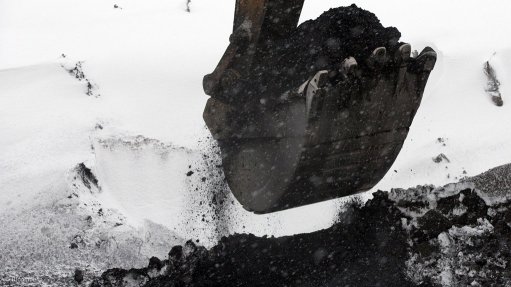
JOHANNESBURG (miningweekly.com) – Poland’s thermal coal sector is set for several years of growth, supported by a commitment to expand coal-fired power generation capacity. However, the outlook for coking coal is less rosy, owing to waning demand from the steel industry.
BMI Research states in a research note that thermal coal, which comprises 90% of the country’s total coal output, will enjoy significant growth opportunities, as power generation capacity fails to meet an increase in demand.
The Fitch Group company is forecasting coal production to increase by 1.6% this year, after a 2.5% decrease in 2016. The country produced an estimated 134.5-million tonnes in 2016, which is expected to increase to 136.7-million tonnes this year. Positive growth is forecast until 2021, by which stage coal production should be 142.8-million tonnes.
However, EU regulations regarding carbon emissions pose a downside risk to the forecast, particularly for thermal coal production.
“We expect the Polish government's efforts to reinvigorate the coal industry to face increasingly stiff resistance from EU regulators as they look to impose caps on carbon emissions,” BMI states, referring to the European Commission’s so-called ‘winter package, which will commit the bloc to reduce emissions by 40% before 2030, as per the Paris Climate agreement.
These caps would require the gradual replacement of heavy carbon-producing industries, such as the coal industry. This would be in direct conflict with Poland’s plan to increase coal capacity.
Energy Minister Krzysztof Tchorzewski announced in early 2017, that the government intends to build more coal-fired power plants, unveiling a plan for State-controlled entities to add 10 GW of capacity by 2025 and introducing a capacity market mechanism that will pay power producers to keep their plants available, in order to protect them from potential losses.
“Due to Poland's general reliance on EU funding, we expect pressure on curbs to current coal expansion objectives to build, thus posing downside risks to our forecasts over 2017 to 2021,” BMI says.
Meanwhile, coking coal demand will suffer from weak steel production in Europe, which is hurt by cheaper imports from abroad and a global drop in prices by 2018 on the back of an expected slowdown in Chinese demand. BMI expects Poland’s steel output to decrease from 8.8-million tonnes in 2017 to 8.7-million tonnes in 2021.
The country is the EU’s largest coking coal producer, having produced 12.2-million tons of metallurgical coal in 2014. BMI states that the country’s largest coking coal producer, JSW, is continuing to expand activities, on the back of higher prices in recent months. JSW, which produced 11.6-million tonnes of coking coal in 2016, is reportedly in negotiations with the European Investment Bank for financing for a new project, which BMI says indicates that domestic production will not completely falter.